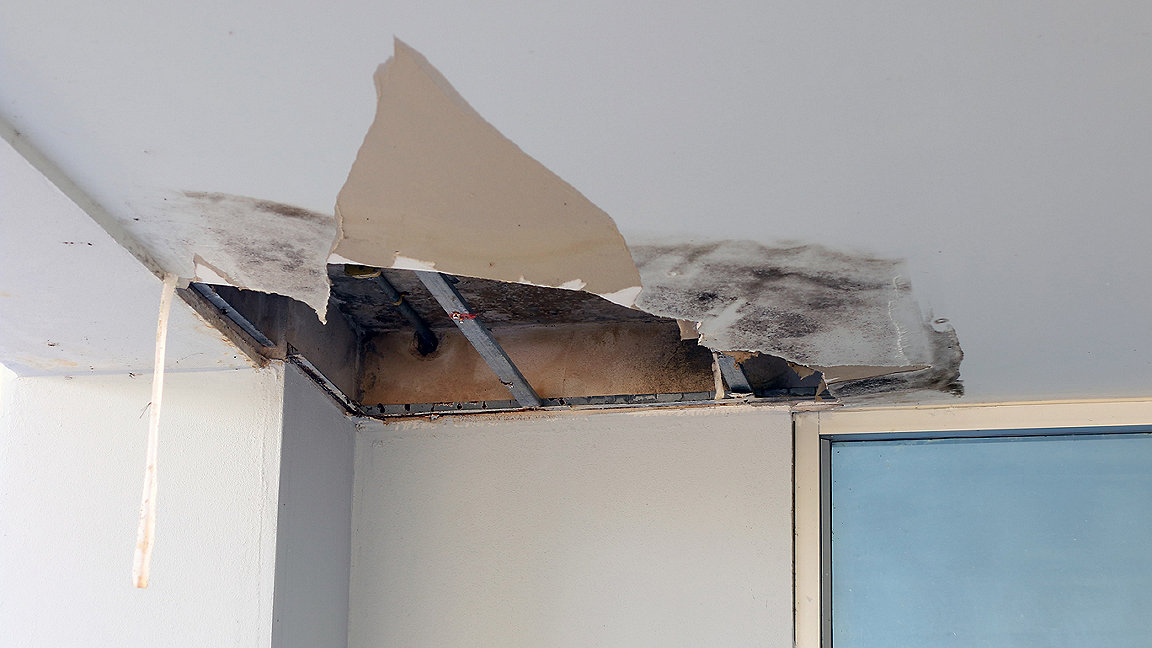
All APC candidates need to be aware of issues relating to repair in both commercial and residential leases.
To help you demonstrate competency in this area, Property Journal offers an A–Z of some key considerations.
Air conditioning: building managers responsible for managing air conditioning systems need to be aware of the banned R22 refrigerant. Existing equipment containing the substance can still be used, but it can no longer be repaired or topped up.
Building Regulations: some repair works may require approval under the Building Regulations. This includes replacing fuse boxes or connected electrics, windows or doors, and coverings on pitched or flat roofs. It also applies when installing bathrooms, including plumbing, and fixed air conditioning systems.
Cracking: this is a common defect observed in a variety of buildings, caused by factors such as subsidence, wear and tear and thermal movement. You should be able to identify the cause, and be aware of BRE Digest 251 on assessing different kinds of cracking.
Defective Premises Act 1972: under section 4 of this legislation, if a landlord is responsible for repairs and maintenance then they generally have a duty to ensure that anyone who could reasonably be affected by relevant defects is also kept reasonably safe from consequent personal injury or property damage.
Section 1 of the act also requires contractors working on new dwellings to do so in a professional manner. For instance, they must use safe materials and ensure that properties are fit for habitation.
Effective full repairing and insuring (FRI) leases: sometimes a lease will include a service charge, so tenants contribute to repairing and maintaining a building's common and external parts. Alongside internal repairing terms for the individual tenants' leases, this is often known as effective FRI.
FRI leases: under such leases, the tenant is responsible for repairing the whole of the premises. Other repairing leases specify parts of the building for which the tenant is responsible, such as internal repairing (IR).
Good and substantial or tenantable repair: the specific wording of a lease's repair clause often nuances the level of repair required. For example, 'tenantable' requires a lower standard of repair than 'substantial'. The former means that the level of repair should be suitable for the tenant carrying on a particular business in the property, e.g., a high-end shop or showroom would need to be kept in a commensurable state of repair.

Health and safety: where repairs are needed, surveyors must be acutely aware of health and safety risks. These can include dangerous structures, electrical installations, the presence of asbestos, working at height, loose roof tiles and trip hazards. But the list goes on and on.
Ensure that you assess risk before visiting the site to inspect defects and assess potential repairs. You should then assess risk again on site so you can respond to unforeseen hazards.
Inspection: this is key to identifying repair issues and ensuring that appropriate advice is given. For instance, you may advise further investigations by a building surveyor, or that simple repairs are made by a suitable contractor. Without physical inspection, many repair issues relating to occupation, management and longevity of buildings would be missed.
Jervis v Harris clause: this clause, named for a 1995 legal case, is found in some but not all leases. It permits the landlord to enter the property and carry out repairs when a tenant is failing to do so. The landlord can then recover the cost from the tenant as debt rather than damages.
(To put and) keep: a lease can require the tenant to put and keep the premises in repair. They are then obliged to bring the property into a fit state of repair, even if it is in disrepair at lease commencement, taking into account its age, character and location.
Litigation: a key legal case relating to repair is Fluor Daniel Properties Ltd & Ors v Shortlands Investments [2001] EWHC 705 (Ch), which confirmed that a tenant's contribution to repair costs must take account of the limited benefit to them where only a short lease term remains.
Method of sale: a property's state of repair will often influence the method of sale a surveyor recommends. For example, properties in very poor condition could be sold by auction, whereas high-quality, well-maintained properties could achieve a higher price by private treaty.
Notice: a notice under section 146 of the Law of Property Act 1925 can be served by a landlord who wishes to commence forfeiture proceedings for a breach of the terms of a lease, including the repairing covenants.
Option to break: tenants must be well advised when vacating a property after serving a notice to exercise a break option. Some break clauses require strict compliance with all lease covenants, including the repair clause. A building surveyor's advice should be sought in good time to remedy issues, and ensure the premises handed back to the landlord are in the state of repair the lease requires.
Planned preventative maintenance (PPM): a PPM strategy is essential to ensure that building maintenance and repair tasks are scheduled ahead of time and carried out regularly. This can help to avoid reactive maintenance and the premature deterioration of building fabric and services.
Quantified demand: this is a schedule of the landlord's losses as a result of dilapidations; that is, breaches of lease due to the property's condition. The schedule will contain costings as well as other items of loss claimed, such as loss of rent, rates, interest and fees.
Rot: this common defect will require remedial action. Wet rot requires a moisture content of around 50% to grow, whereas dry rot only needs 20–30%. Surveyors should be able to identify both types and the fact that dry rot is caused by the fungus Serpula lacrymans.
Section 30, ground (a): under section 30 of the Landlord and Tenant Act 1954, the first of the seven grounds on which a landlord can oppose a new lease is (a), breach of repairing covenant. The breach must be proved at the notice and hearing date, and the court can take into account the tenant's willingness to repair if a new lease is granted.
Terminal dilapidations schedule: there are three types of dilapidations schedule: interim, terminal and final. A terminal schedule tends to be served when there are fewer than three years remaining on the lease.
Uneconomic repair: when assessing rateable occupation for business rates purposes, the state of repair will be considered. If a property is in a very poor state and cannot be economically repaired, then it will be exempt from such rates.
Water: this is often the cause of issues such as leaks, penetrating damp, rising damp, condensation and flooding. Being aware of the potential causes and signs of these defects is essential to ensure buildings are maintained and repaired correctly.
X-ray: also called radiographic testing, X-rays can be used to investigate the internal condition of concrete without intrusive works. This method can determine the location of reinforcing steels, voids and the position of stressing wires and ducts. You may recommend this approach where concerns are raised over the condition of concrete in a building.
Yield: the yield from an investment can be influenced by the state of repair, particularly if a property is in very poor condition. But putting a property into repair and improving its condition can add value and improve returns.
Zinc roofing: zinc was used as a flat roof covering in the Victorian era because it was cost-effective and lighter than lead. However, it is not very durable, becomes brittle with age, and can suffer from soldered joint failure.
Jen Lemen FRICS is a partner at Property Elite
Contact Jen: Email
Related competencies include: Landlord and tenant, Leasing and letting, Property management
